
© 2010-2024 by Fine Arts of the Southwest, Inc. All rights reserved.
Unauthorized reproduction or use is strictly prohibited by law.
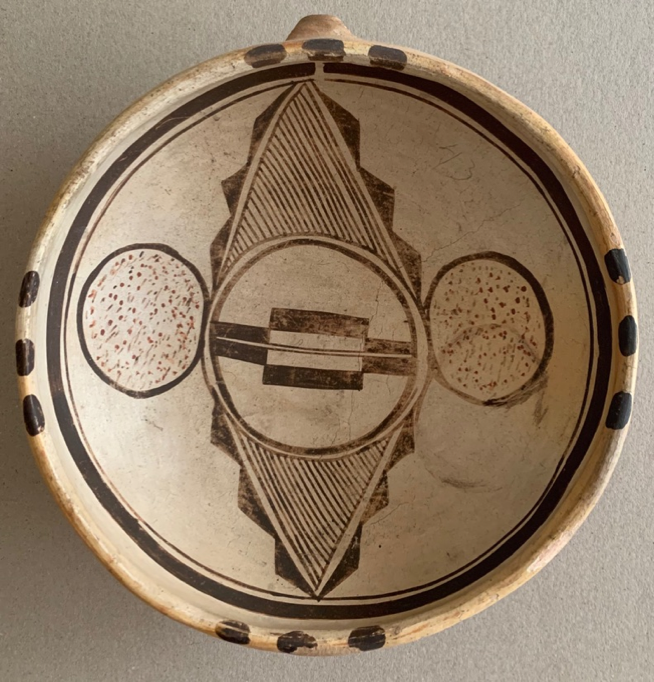
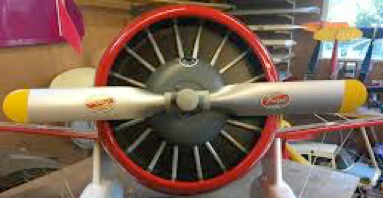
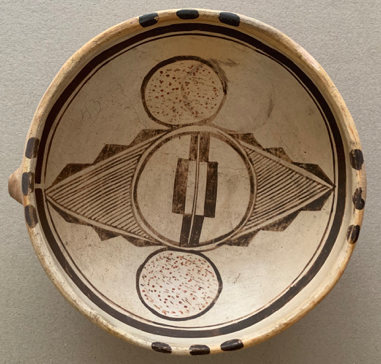
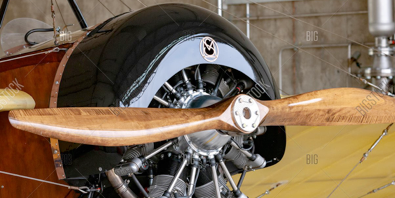
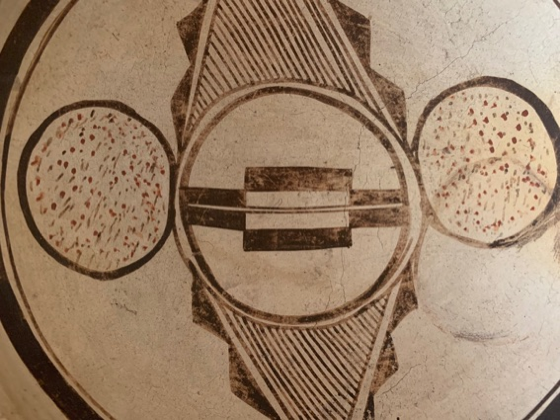
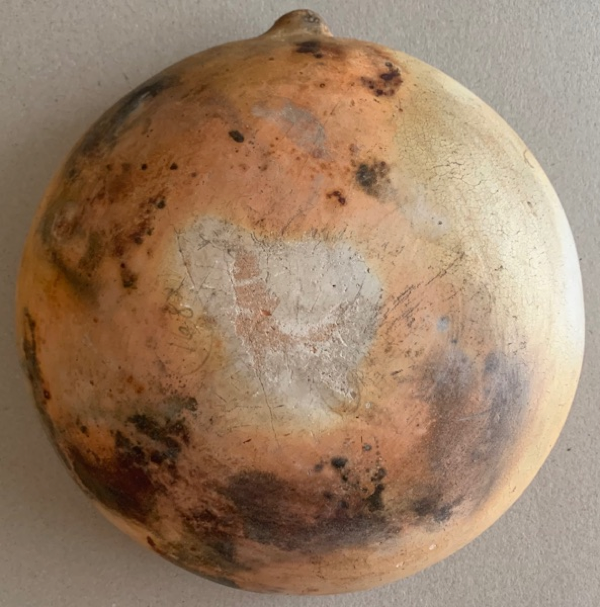
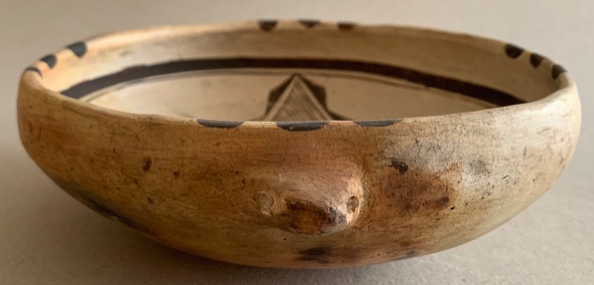
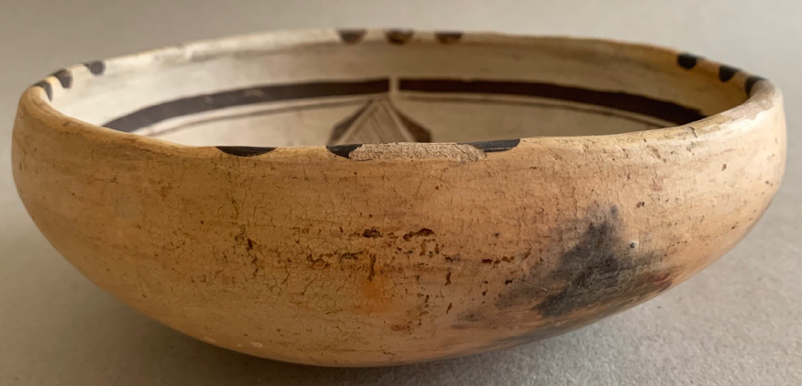
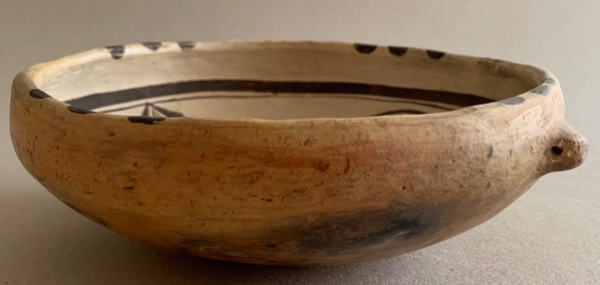
A remarkable Polacca Polychrome pottery
bowl by Nampeyo of Hopi, c.1890’s
With a written attribution by Hopi pottery authority, Dr. Edwin L. Wade
This early bowl by the renowned Hopi pottery Matriarch, Nampeyo (1858-1942) has a fascinating and completely compelling composition. Like a propeller poised for takeoff the sense of impending motion
and dynamism gives the piece a great deal of energy and vibrancy.
As the eminent Hopi pottery authority, Edwin L. Wade, Ph.D. points out in his attribution below, the visual impression of movement here is quite evident. To create this sense of energetic tension in an essentially static object is a masterful feat. As we have said before in a similar context Nampeyo essentially visualized the propeller here a couple of decades before the Wright Brothers invented the airplane.
“This arresting composition by Nampeyo imparts, whether or not intentionally, a visual impression of movement, of the rapid motion of two balls attached to a central spoke. As with a spinning centrifuge frozen just for a moment, an inevitable force will once again initiate rotation and break the static tension in which the composition currently resides. This sense of potential motion is enhanced by the four-quadrant black ticking upon the rim, suggestive of calibrated settings, as with a clock.
The presence of the centrally pierced exterior clay lug is an indicator of dating. The feature’s function was to facilitate hanging the vessel from a wall and was common at Hopi from the 16th century until the 1920s. Based on the crazed Polacca kaolin slip common to Hopi ceramics of the 19th century, the vessel likely dates to the 1890s. “
-Edwin L. Wade, Ph.D.
The bowl measures 8 1/2” in diameter and it is 3 1/4” in height. The bowl is in excellent-plus original condition, and especially so for its relatively advanced age of 125 or so years. There are no significant cracks, no significant chips or major abrasions and a thorough examination under Ultraviolet light reveals no evidence of any restoration or overpainting anywhere on the vessel. There is some minor abrasion wear to the rim and an area or two of very slight discoloration in the interior of the bowl. The bowl’s surface both inside and outside clearly demonstrates the finely crazed or crackled kaolin slip which characterizes the later period (approx.1880-1900) of Polacca polychrome pottery at Hopi.
There is some slight slip cracking in evidence on the interior surface of the bowl and also very slightly on the exterior surface, but the bowl “pings” very nicely when tapped indicating that the cracking is merely on the surface and does not go through the clay body and also indicating a successful high temperature firing. There is also a very faded india ink collection or inventory number “168” written in an old-fashioned cursive on the bottom of the bowl and a lighter inscribed number “43” on the interior.
There also exists a very interesting design “ghost” on the bowl’s interior where Nampeyo clearly changed
her mind during the process of painting the vessel and re-adjusted the location of one of her painted circular motifs by a couple of inches. This is not in any way a flaw but a unique mark and demonstration
of the artistic process, in our view.
This bowl is a strikingly beautiful and historic artwork from the fertile mind and skilled hands of one of the most inventive and accomplished Native American artists in history. A fascinating historic and cultural portal through which to look and contemplate creative greatness.
Note: The signed original copy of Dr. Wade’s letter of attribution (which is reproduced
here in its entirety above) on his personal letterhead is included in the sale of this bowl.
Price $4,950
It is worth noting that the two circular designs on either side of the center circle are filled with very subtle red stipling. This is the only red paint on the bowl and why it is properly referred to as being a Polacca Polychrome instead of Black-on-Yellow.